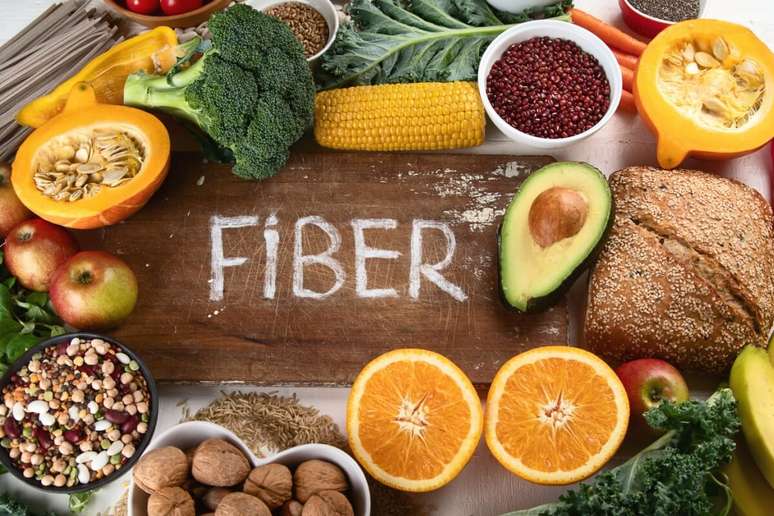Doctors explain how this can interfere with the functioning of the body and the amount of sugar in the blood
Although many people believe that simply combining healthy foods into one meal contributes to the health of the body and mind, the order in which they are consumed can have a significant impact on how the body processes and absorbs them.
Nutrilogist Dr. Marcella Garcez, director and professor of the Brazilian Association of Nutrology (ABRAN), points out that there is strong scientific evidence to suggest that the order in which food is consumed can influence blood sugar levels. This is because eating foods rich in fiber, protein, and healthy fats before consuming carbohydrates can help reduce the rate at which blood glucose levels rise after a meal.
“The main problem of feeds What drives blood sugar spikes is the increased risk of developing insulin resistance and ultimately type 2 diabetes and obesity. Additionally, avoiding blood sugar spikes can help regulate appetite, reduce excessive calorie consumption, reduce body fat storage, and even help promote fat burning as an energy source. Keeping glucose levels more stable can help regulate hormones that act in the hunger and satiety regulatory center in the brain and facilitate weight control,” he explains.
Avoid blood sugar spikes
Avoiding a blood sugar spike is actually the key to a healthier metabolism – and this is why, at meals, the order of the factors changes the result. If you always follow the strategy of eating carbohydrate sources last, you can reduce your risk of diabetes and being overweight, according to endocrinologist Dr. Deborah Beranger.
When blood glucose levels rise, the pancreas needs to release more insulin to help cells absorb glucose. Over time, this cycle of blood sugar spikes followed by high insulin releases can lead to insulin resistance, when cells fail to respond to insulin signals, resulting in chronically high blood glucose levels.
“Insulin is a fat-storing anabolic hormone, so the faster I increase insulin, the more fat I accumulate, and the faster I increase visceral fat. If I increase this type of fat, there is an increase in my insulin resistance” , explains the doctor.
In other words, peak blood sugar increases insulin. “Increased insulin makes you store fat. Fat storage makes you gain weight, and weight gain leads to insulin resistance, weight gain, and increased risk of diabetes,” he adds.
Ideal meal order
According to the nutritionist, a good strategy is to start large meals with foods rich in fiber, lean proteins and healthy fats to reduce the speed of digestion and absorption of simple carbohydrates which will then be consumed. In other words, carbs always come last.
“Opt for complex, whole carbohydrates, such as whole grains, legumes, fruits and vegetables, after consuming foods rich in fibre, protein and fat. These carbohydrates are naturally digested more slowly, resulting in a more gradual release of glucose into the bloodstream , ” suggest.
According to Dr. Marcella Garcez, it’s important to avoid large amounts of simple sugars and highly processed foods, such as sweets, sodas, cakes, cookies and fried foods. This is because they can lead to rapid spikes in blood sugar.
“In addition to the food order, it is important to check the portion size. Consuming excessive amounts of any type of food can lead to blood sugar spikes, even if the order of intake is carefully planned,” she explains.

Importance of fiber intake
If the patient does not like vegetables, it would be important to consume some fruit. rich in fibre, according to Dr. Deborah Beranger. “You can take, for example, an orange or a mandarin, but you have to eat them with the pomace. Another thing we can do, even if the fruit has no fiber, is add a spoonful of chia, or a spoonful of chia seeds flax, or a spoonful of oats, fiber for this fruit”, explains the endocrinologist.
One of the reasons why vegetables are often recommended as the first part of the meal is their fiber content. They are an excellent source of dietary fiber, complex carbohydrates that the body cannot fully digest.
“Fiber has numerous health benefits, in addition to slowing digestion and the absorption of other nutrients, it can help increase satiety and reduce appetite. Because it is fermented by beneficial bacteria in the gut, it promotes healthy intestinal”, explains Dr. Marcella Garcez.
The key is balance
Adopting this order can work as a strategy for weight management and metabolic disease – and you don’t even have to wait a long time to switch from vegetables to meat and then to rice. “The question of time between different consumptions food groups it is not a hard rule and there is no universal guide on this matter,” explains Dr. Marcella Garcez.
According to the doctor, the main thing is to understand how different types of food interact in the body and how they affect digestion, nutrient absorption and blood sugar levels. “The objective is to balance macronutrients, proteins, carbohydrates and fats, choosing first and foremost to consume foods that promote a gradual release of energy, avoiding blood sugar spikes”, he underlines.
However, it is important to underline that no two organisms work the same way. “[…] The glycemic response may vary from person to person and advice on nutrition and blood sugar control should preferably be individualized. Other strategies also supported by science include walking after large meals, which can help control blood sugar levels”, concludes the nutritionist.
By Paola Amoroso
Source: Terra
Ben Stock is a lifestyle journalist and author at Gossipify. He writes about topics such as health, wellness, travel, food and home decor. He provides practical advice and inspiration to improve well-being, keeps readers up to date with latest lifestyle news and trends, known for his engaging writing style, in-depth analysis and unique perspectives.








